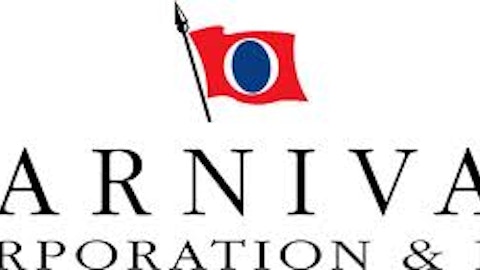
E I Du Pont De Nemours And Co (NYSE:DD) was indisputably the largest explosives-manufacturer in the United States for much of its early existence. Founded as a gunpowder mill to meet the needs of a nation with few skilled powder chemists, E I Du Pont De Nemours And Co (NYSE:DD) was the Army’s largest gunpowder-supplier by the end of the Civil War. By the early 20th century, DuPont was a veritable kingpin of kabooms, with 40 gunpowder and explosives plants scattered around the country. But the E I Du Pont De Nemours And Co (NYSE:DD) family was evidently not satisfied with fair dominance. Shortly after the Civil War, it established a Gunpowder Trade Association, which engaged in cartel-esque behavior that led, on July 31, 1907, to antitrust proceedings that would eventually separate the gunpowder titan from much of its original business — or at least that was the intent.
Erik Sass, writing for mental_floss, gives a detailed overview of the campaign that led to the end of the DuPont gunpowder trust:
In 1906 Robert S. Waddell, a former sales agent for E I Du Pont De Nemours And Co (NYSE:DD) Powder Company, launched a crusade against his former employer, alleging that DuPont was colluding with its competitors to reap huge profits by restraining competition and price-fixing. According to Waddell — who not coincidentally had founded his own powder company to compete with DuPont — the “Powder Trust” was bilking the U.S. government to the tune of $2,520,000 a year in illegal profits through its monopoly on the manufacture of gunpowder for the military. Waddell further alleged that the company was relying on the protection of a powerful member of the DuPont family, Senator Henry S. DuPont, to get away with it.
Nor were these charges unsubstantiated. Waddell was able to produce letters, price agreements, and internal documents from his time with E I Du Pont De Nemours And Co (NYSE:DD) showing how it worked together with other companies in the Gunpowder Trade Association to restrict competition and keep prices high. Presented with this evidence, on July 31, 1907, the U.S. Department of Justice charged DuPont and the other powder companies in the GTA with “maintaining an unlawful combination in restraint of interstate commerce” in violation of the Sherman Anti-Trust Act.
Five years later, the antitrust campaign proved successful, and DuPont was forced to split its gunpowder operations into two new subsidiaries. However, DuPont itself retained control of gunpowder manufacture for the military, which proved enormously beneficial two years later when World War I broke out in Europe. Sass notes that DuPont made a fortune from this war, supplying as much as 40% of all Allied munitions from 1914 to 1918. Throughout this period, sales to the military brought DuPont an incredible $1.3 billion revenue windfall, which would be equal to approximately $19.3 billion today.
Incidentally, E I Du Pont De Nemours And Co (NYSE:DD) is actually doing better now as a company with minimal munitions capacity: In its latest fiscal year, the diversified chemical giant earned roughly twice as much in real terms as it earned from munitions sales during the entire Great War. However, those munitions sales put DuPont in position to join the Dow Jones Industrial Average (Dow Jones Indices:.DJI) in 1924, by which point its annual revenue had stabilized at a more moderate peacetime level of $94 million.
The first patent in America
There are more than 9 million patents on file in the U.S., but only one can be first. That patent, though unnumbered, belongs to Samuel Hopkins of Vermont. He received a patent, signed by President George Washington, for a potash and pearl ash (a.k.a. potassium carbonate) manufacturing process on July 31, 1790. These ingredients were needed to make a wide range of Revolution-era necessities, from glass to fertilizer, soap to fine china. Hopkins also has the unique distinction of being the first Canadian patent-holder, as he obtained a patent for the same manufacturing process from the Governor General in Council of the Parliament of Lower Canada in 1791.
Disney conquers the small screen
Four years after it joined the Dow, The Walt Disney Company (NYSE:DIS) consolidated its position as the king of all media (sorry, Howard Stern) when it acquired Capital Cities/ABC on July 31, 1995. The $19 billion deal, which is still the largest acquisition in The Walt Disney Company (NYSE:DIS)’s history, brought together two media entities with a four-decade relationship.
Onetime ABC honcho Leonard Goldenson began that relationship in 1953 when he provided funds through ABC for the construction of Disneyland. This not only gave ABC a stake in the House of Mouse that would be held until 1960, but also led to the airing of many popular Disney programs on ABC, beginning with 1954’s Disneyland and continuing through The Mickey Mouse Club and other programs. The deal also reunited Disney CEO Michael Eisner with his former employer. The legendary executive built his early reputation as ABC’s VP in charge of programming before moving to the corner office at Paramount, which eventually led to his position at The Walt Disney Company (NYSE:DIS).
The Walt Disney Company (NYSE:DIS) deal came as a big surprise to market watchers, who were not expecting a megadeal that would vault the House of Mouse into 11th place on the Fortune 500. The deal also came with its fair share of criticism: It may run afoul of antitrust regulation; ABC was growing much slower than the red-hot The Walt Disney Company (NYSE:DIS); the deal failed to clarify who would succeed Eisner, who had recently undergone a quadruple bypass and endured several major executive losses. On the whole, it was viewed as an excellent deal. When it was finalized the following year, few could have expected ABC to become such an outsized part of Disney’s diversified business. The ESPN cable sports network alone now accounts for nearly half of The Walt Disney Company (NYSE:DIS)’s market value.
The article Market Milestones: Breaking DuPont and Building Disney originally appeared on Fool.com and is written by Alex Planes.
Fool contributor Alex Planes holds no financial position in any company mentioned here. Add him on Google+ or follow him on Twitter @TMFBiggles for more insight into markets, history, and technology.The Motley Fool recommends Walt Disney (NYSE:DIS). The Motley Fool owns shares of Walt Disney.
Copyright © 1995 – 2013 The Motley Fool, LLC. All rights reserved. The Motley Fool has a disclosure policy.





